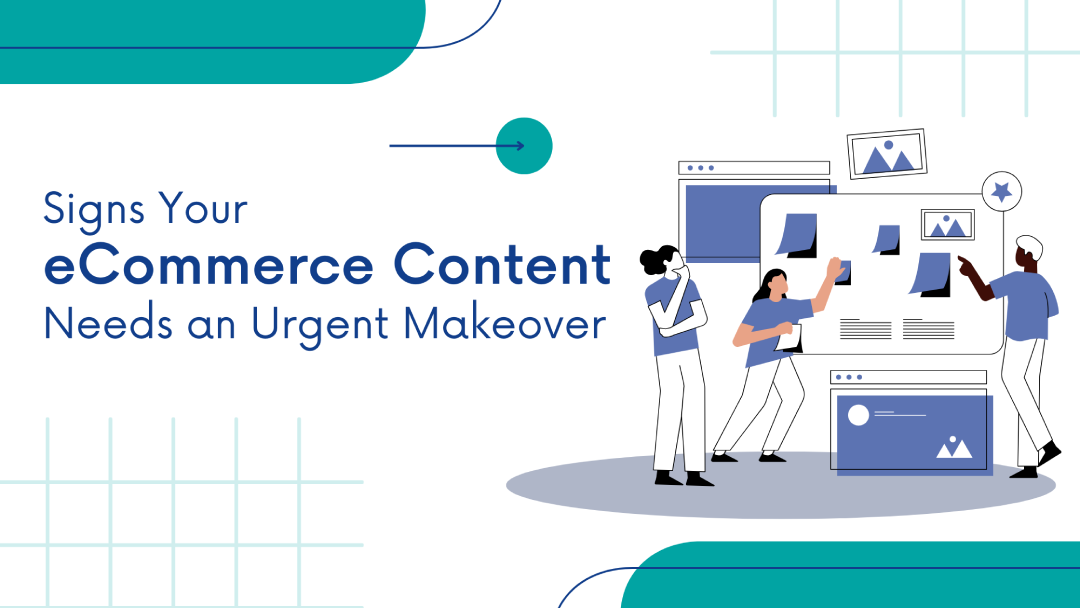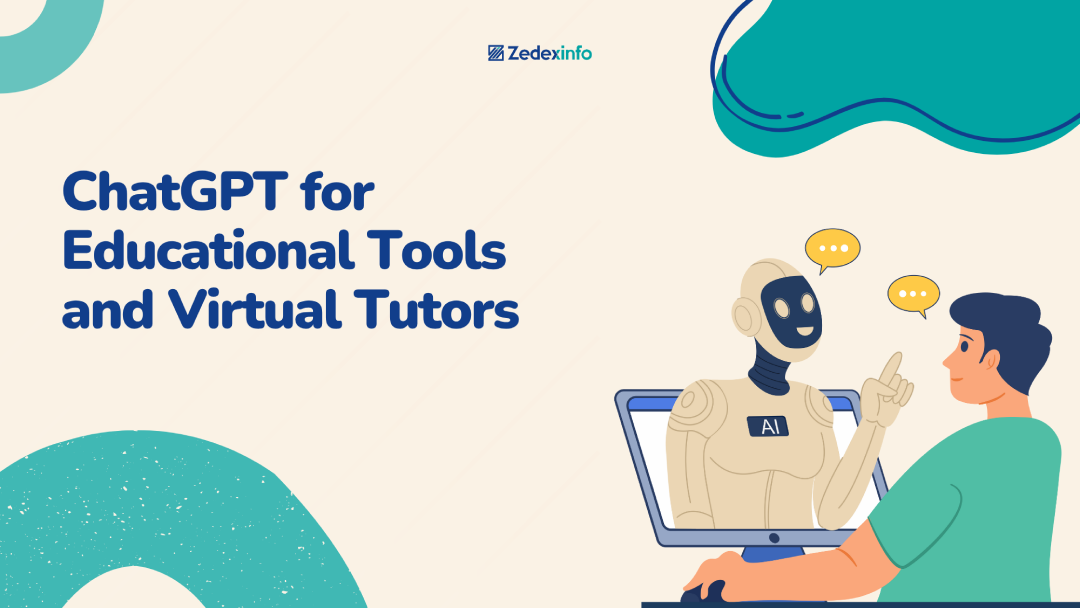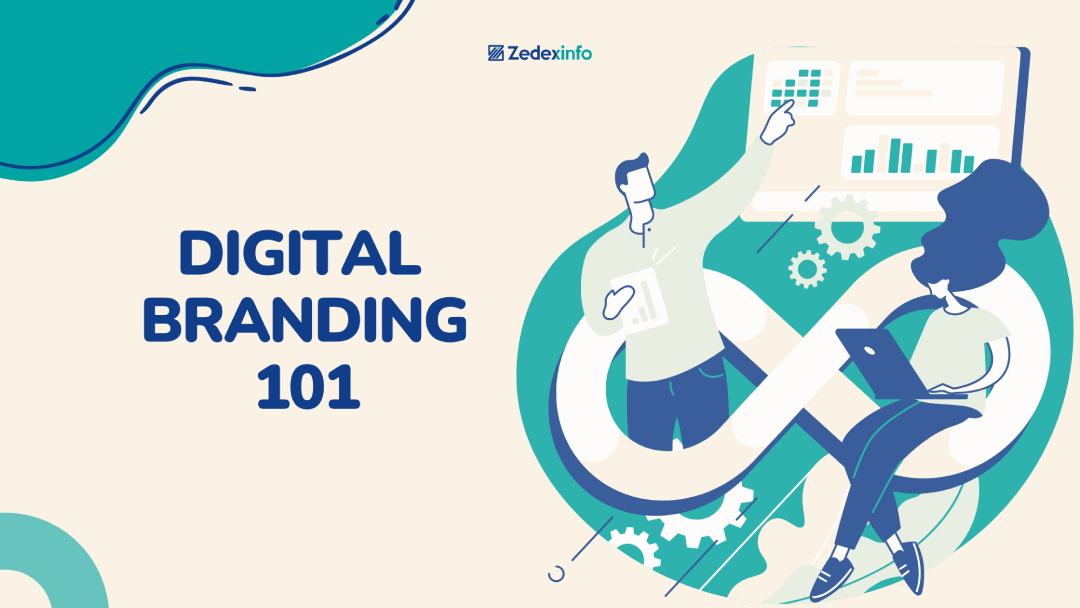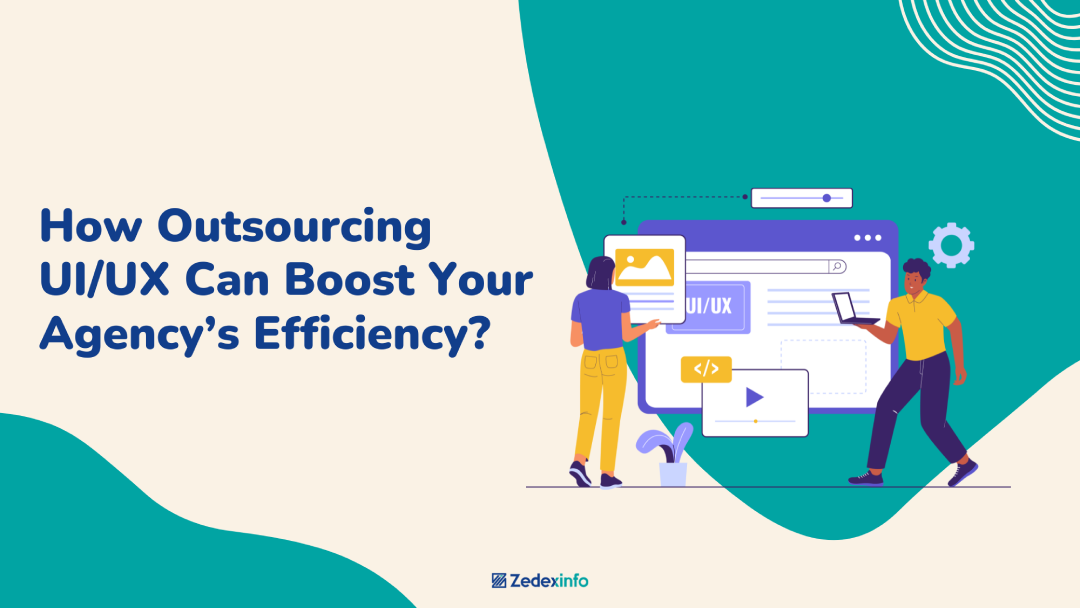An online store that feels like it’s been frozen in time, complete with outdated photos and descriptions that might as well be wearing bell-bottom jeans is as good as being offline. It’s a major buzzkill when a site feels ancient and doesn’t serve up the information and inspiration you need. First impressions matter more than ever. That’s why keeping your eCommerce content fresh, dynamic, and on point is so essential for turning casual browsers into eager buyers.
With consumer preferences evolving faster than viral dance moves, your content must do more than just exist. It needs to captivate, engage, and build trust. This is where content audits are paramount. A well-executed audit helps you spot tired product descriptions, underperforming pages, and outdated visuals long before they cost you sales. Think of it as your online store’s regular checkup, ensuring every piece of content looks, sounds, and feels just as appealing as the day it debuted. Let’s dive in and discover the telltale signs that your eCommerce content could use a swift, stylish makeover.
Declining Organic Traffic:
One of the most evident signs that your eCommerce content needs attention is a drop in organic traffic. If you typically rely on search engine queries to bring potential customers to your store, you may notice fewer visitors landing on your website. This trend often suggests that your content is not performing well in search results, or that competitors are offering more current and relevant information.
Search engines favour content that aligns with user intent, incorporates relevant keywords, and provides engaging up-to-date information. Search engines may start ranking your pages lower if your products, blog posts, or landing pages do not meet these criteria. Additionally, if you have not updated your site structure or navigation in a long time, you might be losing potential visitors who find it difficult to explore your content.
Possible Solutions:
- Conduct keyword research: Search terms relevant to your products might change over time. Refresh your keyword list to reflect current trends and consumer language.
- Update product descriptions: Ensure they contain fresh and optimized content that appeals to your target audience and matches their search queries.
- Create high-value content: Publish new blog posts or articles that address common questions, provide solutions, or offer insights into industry trends. This kind of fresh material can boost your organic ranking.
- Improve site architecture: Make navigation user-friendly. This encourages visitors to spend more time on your site, which can improve your search rankings.
- Run a technical SEO audit: Check for broken links, missing meta tags, and slow page loading times. Even minor technical issues can harm your website’s SEO performance.
If you notice a steady decline in organic traffic, do not wait to take action. Updating your content and optimizing for SEO can revitalize the flow of new visitors and improve your overall sales performance.
Low Conversion Rates:
A conversion could mean a direct sale, an email signup, or any other goal you have set for your online store. If your traffic numbers are stable but your conversion rates have begun to dwindle, it may indicate that your content is failing to persuade users to take the next step.
Low conversion rates can stem from lacklustre product descriptions, unclear calls to action, or even poor site navigation. If the content on your product pages does not clearly communicate benefits, features, and reasons to trust your brand, visitors will hesitate to buy. A compelling description should capture attention quickly, highlight key product benefits, and address possible concerns.
Possible Solutions:
- Refresh product descriptions: Focus on the unique value your product offers. Use language that resonates with the target audience and incorporate storytelling if relevant.
- Enhance user experience (UX): Sometimes, problems with conversion rates are not only about words on the page. Look into design aspects, such as easy access to the add-to-cart button, simplified checkout, and uncluttered layout.
- Use persuasive calls to action (CTAs): Clearly guide users on what to do next. Instead of a generic “Buy Now,” try something more compelling like “Get Your [Product] Today.”
- Include social proof: Highlight customer testimonials, reviews, or industry awards. These elements show prospective customers that others have had positive experiences.
- A/B test content elements: Experiment with different headlines, descriptions, and button designs to find out what resonates best with your audience.
High Bounce Rates:
Bounce rate is the percentage of website visitors who exit your site after viewing only one page. A high bounce rate often signals that people are not finding what they are looking for quickly, or that your page takes too long to load. While bounce rates vary by industry, a consistently high figure is worth investigating.
Your content might be the root cause if visitors sense it is irrelevant or unengaging. For example, if a user searches for “comfortable leather sandals,” clicks on your link, and then lands on a generic shoe page with minimal information about those specific sandals, they are likely to leave. The mismatch between what they expected and what they see is critical. Additionally, large image files, slow page loading speeds, and clunky site design can also contribute to higher bounce rates.
Possible Solutions:
- Improve site speed: Compress images, use caching, and minimize code bloat so your pages load faster.
- Deliver what you promise: Ensure the headline and meta description align with the page content. When visitors click through, they should see information related to their search query.
- Structure your content clearly: Use clear headings, bullet points, and short paragraphs. This helps users scan for the information they need.
- Check mobile responsiveness: Many users browse on smartphones and tablets. A site that is not mobile-friendly can increase bounce rates.
- Review internal linking: Guide visitors to other parts of your site by including relevant links or product recommendations.
Maintaining a lower bounce rate involves understanding user expectations and delivering content that matches them. Once you provide immediate value, users are more likely to stay, explore, and eventually convert.
Outdated Product Information:
Outdated product information can wreak havoc on customer experience and brand credibility. Imagine a shopper excitedly adding a product to their cart, only to find out later that it is no longer available in that size or colour. Inaccurate or outdated details can lead to cancelled orders, an influx of customer complaints, and lost sales.
Stale content might also mean that your visuals are out-of-date. Perhaps your images no longer reflect the current product design, or you are missing a new product line that was launched months ago. This discrepancy confuses customers and can cause them to distrust the information on your site.
Possible Solutions:
- Regularly audit product pages: Schedule periodic checks to confirm pricing, availability, and descriptions are accurate.
- Automate updates when possible: Integrate your inventory system with your website. If an item is out of stock, it can automatically reflect that status on the product page.
- Use current images or videos: High-quality visuals that match your latest product line demonstrate professionalism and reliability.
- Highlight new arrivals: If you frequently release new products, make it easy for customers to find them through a “New Arrivals” section or banner on your homepage.
- Encourage user-generated content: Customers might share photos or reviews of your new product lines. This keeps your page fresh and fosters community engagement.
Keeping your product pages updated shows customers that you value their time and trust. An eCommerce store that fails to provide accurate information risks a one-time lost sale and also lasting damage to its reputation.
Poor Search Engine Rankings:
A low or deteriorating position in search results can limit your eCommerce site’s exposure to new customers. If your pages that once ranked well are now buried, or if your site has never gained traction, it is a sign that your content may need an SEO-focused refresh.
Search engine algorithms have evolved far beyond counting keyword density. They consider user experience, content depth, and authority signals such as backlinks. If your content is shallow, riddled with outdated keywords, or lacks structure, it likely will not meet modern SEO standards. Search engines aim to deliver the best and most relevant results to users. You must show that your site has something valuable to offer.
Even small improvements can make a significant difference in search engine rankings. Frequently updating your content and optimizing it for user intent can help you maintain a healthy search presence and drive steady traffic to your site.
Possible Solutions:
- Perform an SEO audit: Check for duplicate content, broken links, and missing meta tags. Tools like Google Search Console can help you identify issues.
- Incorporate structured data: Add schema markup for products, reviews, and pricing so search engines can better understand your content.
- Optimize meta tags: Create compelling title tags and meta descriptions that encourage clicks.
- Build high-quality backlinks: Reach out to industry influencers or other reputable websites to link to your site. High-quality inbound links indicate your site’s credibility.
- Focus on quality content: Write informative blog posts, guides, or tutorials that add value. This content can attract backlinks and improve overall site authority.
Negative User Feedback:
User feedback acts as an honest mirror that can reflect issues you might be overlooking. Customers often voice opinions through social media, customer service emails, or product review sections. If you consistently receive negative comments about the clarity of your product descriptions or the accuracy of your site’s information, it is a strong sign that your content requires immediate attention.
Feedback related to confusion, skepticism, or disappointment often stems from unclear or misleading content. For example, a product description might glorify certain features that are either exaggerated or misrepresented, leaving buyers feeling deceived when the product arrives. Customer trust is central to your business, and once that trust is broken, it can be difficult to repair.
Possible Solutions:
- Take feedback seriously: Collect and analyse all negative feedback to identify recurring problems.
- Improve transparency: Provide realistic product descriptions, highlight potential limitations, and offer sizing guides if relevant.
- Offer FAQs: If customers frequently ask the same questions, incorporate answers directly into the product page or create a dedicated FAQ section.
- Encourage reviews: Invite satisfied customers to leave positive reviews. This can balance out some of the negative feedback and give future buyers a fuller picture.
- Respond publicly to issues: Whether on social media or review platforms, a thoughtful and professional reply shows your brand cares about customer satisfaction.
Inconsistent Brand Voice:
Your brand voice is part of what sets you apart from competitors. It can be playful, authoritative, luxurious, or friendly. The key is to maintain consistency across all platforms, including your website, social media, and email marketing campaigns. If you notice that different sections of your site, use vastly different tones, or if your blog posts read like they are from another company altogether, your brand identity can become muddled.
Inconsistent branding is often the result of multiple contributors writing content without clear guidelines. It might also happen when brands pivot in strategy but fail to update all existing materials. The confusion this creates can undermine customer trust and recognition. A consistent brand voice creates a recognizable persona that resonates with your audience. It makes your messaging more memorable and fosters loyalty.
Possible Solutions:
- Develop brand guidelines: Create a style guide that outlines tone, language preferences, and messaging points. Distribute it to everyone who creates content.
- Use a single content manager or editor: Having one person oversee all content can help maintain a cohesive voice across multiple channels.
- Train your team: Provide clear instructions and examples to new team members or freelance writers so they understand your brand personality.
- Review partnerships and sponsorships: Ensure that any external content or influencer collaborations also match your brand tone and image.
Lack of Mobile Optimization:
Many shoppers browse and buy products today through their mobile devices. If your site is clunky or difficult to navigate on a smartphone or tablet, you are likely losing potential customers. Poor mobile optimization is beyond just a design issue. It affects how people perceive your brand and engage with your content.
A site that requires pinching and zooming to read text or one that has images that do not load correctly on mobile screens can push visitors away. Search engines also reward mobile-friendly sites with higher rankings, so a lack of optimization could be hurting both your traffic and revenue.
Possible Solutions:
- Adopt responsive design: Ensure your site layout automatically adapts to different screen sizes.
- Use mobile-friendly content formatting: Break text into smaller paragraphs, use larger fonts, and incorporate clear calls to action that are easy to tap.
- Optimize images: Compress them to reduce load times and make sure they display correctly on all devices.
- Test across devices: Check how your site appears on various smartphones, tablets, and browsers to identify and fix issues.
- Simplify navigation: Use concise menus and buttons that users can easily tap with their thumbs.
Ineffective Calls to Action:
Your calls to action (CTAs) are the signposts guiding customers a step closer to your company. Whether you want them to add a product to their cart, subscribe to a newsletter, or download a resource, your CTAs need to be clear and compelling. If you find that visitors are not clicking on your buttons or links, the content around your CTAs might be to blame.
An ineffective CTA might have generic wording, poor placement on the page, or fail to provide a compelling reason for action. Sometimes, simply changing the colour, size, or text of a button can dramatically increase engagement. Other times, you may need to provide more context in the surrounding content, such as explaining the benefits of signing up for your newsletter or detailing the key highlights of a free downloadable guide. Effective CTAs can easily make or break your eCommerce success. When done correctly, they bridge the gap between casual browsing and a meaningful conversion.
Possible Solutions:
- Be direct yet enticing: Instead of using “Submit,” try something like “Get Started,” “Claim My Discount,” or “Send Me Updates.”
- Place CTAs strategically: Position them where the user naturally finishes reading a section of text. Make sure they are not buried in clutter.
- Create a sense of urgency: Words like “Now,” “Today,” or “Limited Offer” can motivate people to act.
- Use contrasting colours: Ensure the CTA button stands out from the background and other elements on the page.
- Test multiple versions: A/B testing different CTA designs and copy helps you figure out what resonates best.
Incorporating Engaging Visuals and Multimedia:
While written content is crucial, visuals often deliver the first impression. Images, videos, infographics, and interactive elements can capture attention and improve user understanding of your products. If your eCommerce site relies solely on text, or if the images are low-quality or outdated, you may be losing engagement.
A modern eCommerce experience often includes product videos, 360-degree images, or virtual try-on features. These elements offer customers a better feel for what they are buying, thus reducing uncertainty and build trust. If your site lacks these engaging tools, it might appear less trustworthy or outdated compared to competitors.
Possible Solutions:
- Use high-quality images: Show your products from multiple angles and in various use-case scenarios.
- Add videos: Short demos, unboxing videos, or behind-the-scenes clips can add depth and personality to your brand.
- Include infographics: If you have complex product specs, an infographic can simplify the information and make it more visually appealing.
- Leverage user-generated content: Encourage customers to share photos or videos of themselves using your products. This social proof can build trust and community.
- Consider interactive elements: Tools like product configurators or AR features can set you apart by offering a unique shopping experience.
How ZedexInfo Can Help in Improving Your eCommerce Content?
Before we wrap up, let’s be real. eCommerce content can make or break your brand online. If your content isn’t speaking to the right audience or getting found by search engines, you’re leaving potential sales on the table. That’s where we come in.
At ZedexInfo, we specialize in turning underperforming eCommerce platforms into high-converting digital experiences. Our approach goes beyond just fixing typos or throwing in a few keywords. We dig deep to understand your brand, your audience, and your market. Then we optimize your content strategy to drive results.
We help you:
- Identify content gaps and fix what’s holding your site back.
- Improve search rankings with smart SEO tactics.
- Craft messaging that connects emotionally and converts effectively.
Feeling stuck with your current content or not sure where to start? We get it. A full content makeover can feel overwhelming, but that’s exactly why we tailor our services to match your business goals and your budget.
Whether you need help with on-page optimization, product descriptions, landing page content, or overall content strategy, our team’s got your back. Think of us as your behind-the-scenes content squad, ready to revamp, refresh, and re-energize your eCommerce platform.
Conclusion:
If any of this feels familiar, it’s time to act. Regular content audits can quickly uncover what’s holding your store back and help you stay competitive. By applying the right fixes, you’ll create a smoother shopping experience and build a stronger brand presence.
Whether you’re taking the DIY route or bringing in pros like us at ZedexInfo, the goal is simple, keep improving. Watch your metrics, listen to your customers, and make content updates part of your regular routine. That steady effort is what turns browsers into loyal buyers.




